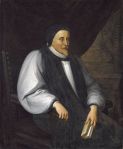I had some trouble this morning with my Internet connection and could not be sure that the full text of the Weekly Update went out. The message announced the publication of Episode 35 in The Holy Bible: the New Testament, which is focused on the final three I AM sayings (Greek: ego eimi) in St. John’s Gospel: I AM the Resurrection and the Life; I AM the Way, the Truth and the Life; and I AM the True Vine.
I use these three sayings to connect the message of my You Tube video Bible Study to concepts explained in more detail in Blessed is the Man …, which is Part Three of Christian Spirituality: an Anglican Perspective. Jesus says “I AM the Way…..” In Psalm 1, the unknown Psalmist divides the world into the “Two Ways,” that of the godly, or righteous, and the ungodly, and offers a clear statement, expressed in two verses in the negative, of what the godly man will not do, followed by three verses, expressed in the positive form, of what the godly will do and act. In Psalm 119, King David reminds readers of how the righteous will be guided in their daily lives not just by “knowledge” but by “understanding.” How we, as Christians, can access this “way” is discussed in “Seeing” the Face of God, which is Part Two in Christian Spirituality. The book is availalbe from my author page at Amazon in both paperback and Kindle editions



